'Persia: Ancient Iran and the Classical World' at Getty Villa, until August 8, 2022
Plaque with a Winged Lion-Griffin, Achaemenid, 500–330 BC. Gold. H: 0.3 × W: 10.5 × D: 10.8 cm (1/8 × 4 1/8 × 4 1/4 in.). The Oriental Institute of the University of Chicago, A28582. Photo: Courtesy of the Oriental Institute of the University of Chicago.
Ancient Iran, historically known as Persia, was the dominant nation of western Asia for over a millennium (about 550 BC–AD 650), with three native dynasties—the Achaemenids, Parthians, and Sasanians—controlling empires of unprecedented size and complexity.
Their principal military rivals throughout this period were the ancient Greeks and Romans, with whom they nevertheless enjoyed an active exchange in many aspects of architecture, religion, and court culture, as is demonstrated in the artworks they produced.
The Getty Villa Museum presents the exhibition Persia: Ancient Iran and the Classical World, the first major U.S. exhibition to highlight the relationship between the Classical World and Ancient Iran. In addition to the spectacular ancient works on view that explore the artistic and cultural connections between the rival powers of Iran, Greece, and Rome, the exhibition is supported by two innovative digital experiences: a 360-degree immersive film onsite at the Villa and a highly interactive online website at getty.edu/persepolis.
Bracelet with Griffin Terminals, Achaemenid, about 400 BC. Gold, once inlaid with semiprecious Stones. H: 12.3 × W: 11.6 × D: 2.6 cm, Weight: 396.5 g (4 13/16 × 4 9/16 × 1 in., 0.8741 lb.). British Museum, London. Presented by Sir Augustus Wollaston Franks, 1897, 1987, 1231.116 © The Trustees of the British Museum
“The military rivalry between the ancient Persian empires that controlled much of the modern Middle East, and the Greeks and Romans of the eastern Mediterranean, determined the geopolitical map of Eurasia from Britain in the west to the border of India in the east for over a thousand years. In the early 5th century BC, against all odds, the Greeks repulsed a series of Achaemenid invasions that would have changed the cultural trajectory of Europe. Two and a half centuries later, Alexander the Great’s conquest of the East brought down the Achaemenids but also inspired an epochal cross-fertilization of the two cultures and traditions. The rise of the Romans as the major Mediterranean power from the 2nd century BC made a clash of titans inevitable. More than once the destinies of Europe and the Middle East hung on the outcome of mighty battles between the Roman emperors and the Parthian and Sasanian kings. Yet throughout all these violent vicissitudes, an active exchange of goods, languages, ideas, faiths, and artistic visions, reflecting a strong mutual respect, flourished in both directions. We see this most vividly in the imperial imagery celebrating their kings and rulers that was propagated by both the Persians and their Greek and Roman adversaries. As we ponder the most significant turning points in Eurasian history, there was perhaps no more momentous encounter than that between Persia and the Classical World,” says Timothy Potts, Maria Hummer-Tuttle and Robert Tuttle Director of the J. Paul Getty Museum.
“The many spectacular objects on view are extraordinary expressions of Persian political and cultural identity, many of them among the most famous masterpieces of Persian art. I hope this exhibition will convey how fruitful the intermingling of very different artistic and other cultural traditions was for both cultures, as can still be seen in aspects of our visual arts today.”
Wine Vessel with Lion-Griffin Handles, Achaemenid, 400–330 BC. Silver with gilding. H: 32.1 × W: 22.2 × D: 18.4 (12 5/8 × 8 3/4 × 7 1/4). Getty Museum 86.AM.751.
Potts adds: “I am especially pleased that visitors to the exhibition will also be able to explore some of the highlights of ancient Iranian art and architecture through digital technologies. Two innovative digital experiences—one an immersive on-site experience at the Villa; the other accessible online—will allow visitors to walk in the steps of a Persian dignitary through a digital reconstruction of the spectacular Achaemenid palace of Persepolis. These new tools, in partnership with the latest scholarship, can provide dynamic, interactive engagement with distant places and cultures, and we hope to expand their use in the future.”
Potts adds: “I am especially pleased that visitors to the exhibition will also be able to explore some of the highlights of ancient Iranian art and architecture through digital technologies. Two innovative digital experiences—one an immersive on-site experience at the Villa; the other accessible online—will allow visitors to walk in the steps of a Persian dignitary through a digital reconstruction of the spectacular Achaemenid palace of Persepolis. These new tools, in partnership with the latest scholarship, can provide dynamic, interactive engagement with distant places and cultures, and we hope to expand their use in the future.”
Drinking Horn (Rhyton) with a Stag, Parthian, about 100 BC. Silver with gilding and glass inlay. H: 27.5 × L: 46 × Diam. (rim): 12.7 cm (10 13/16 × 18 1/8 × 5 in.). Getty Museum, 86.AM.753.
The ancient works in the exhibition include royal sculpture, spectacular luxury objects, religious images, and historical documents assembled from major museums in the United States, Europe, and the Middle East.
“Many remarkable objects from Ancient Iran spanning approximately 1,200 years will be on display for the first time in the U.S.,” adds Jeffrey Spier, Anissa and Paul John Balson II Senior Curator of Antiquities at the J. Paul Getty Museum. “We are honored to present this exhibition in Southern California, home to the largest Iranian community outside Iran, and to leading academic centers dedicated to the study and appreciation of Iranian history, art, and culture.”
Seal with a Persian King Fighting a Greek Soldier, Achaemenid, about 450 BC. Banded agate scaraboid. H: 1.7 × W: 1.2 × D: 0.7 cm (11/16 × 1/2 × 1/4 in.). Getty Museum 2019.13.9.
Persia: Ancient Iran and the Classical World is the second in the Getty Museum’s program The Classical World in Context, a series of exhibitions and related publications that explore the relationship between the Classical world of Greece and Rome and their neighboring cultures from north Africa and the Middle East through to Central Asia. The inaugural exhibition in the series was Beyond the Nile: Egypt and the Classical World in 2018. The series will continue in 2024 with Thrace and the Classical World.
The Persian king Cyrus the Great and his Achaemenid successors established the largest and most powerful empire of the ancient world. Their significance in history, however, lies not just in territorial or military might but in their creation of a successful model for centralized rule over multiple peoples with different customs, religions, laws, and languages, allowing diverse cultures to coexist and thrive within a unified state structure. Political institutions and artistic ideas introduced by the Achaemenid Persians considerably influenced later empires, providing a foundation for the Seleucid Greeks, Parthians, Romans, and Sasanians.
Relief with a Lion and Bull in Combat, Achaemenid, 359–338 BC. Limestone. H: 91.4 × W: 175.3 × D: 38.1 cm, 1950.4672 kg (36 × 69 × 15 in., 2 tons 300 lb.). The Oriental Institute of the University of Chicago, A73100. Image: Courtesy of the Oriental Institute of the University of Chicago, Photo: Michael Tropea.
The first part of the exhibition examines the establishment of the Achaemenid Empire in mid-6th century BC, when Cyrus the Great captured western Asia Minor (in present-day Turkey) and conquered the Greek settlements there. Achaemenid sculpture, silver vessels, and jewelry are on display alongside Greek depictions of the Persian wars (490–79 BC). The Greek cities long established on the western coast of Asia Minor and the native people in nearby Lydia, Caria, and Lycia at first resisted Persian demands for submission but eventually came to terms with living in a great empire. These regions produced works both in Greek and Persian style, reflecting the complex cultural influences around them.
Persian Guard, Achaemenid, 486–465 BC. Limestone. H: 53 × W: 46.5 × D: 9.2 cm (20 7/8 × 18 5/16 × 3 5/8 in.). Museum of Fine Arts, Boston. Archibald Cary Coolidge Fund, 40.170. Photograph © 2022 Museum of Fine Arts, Boston.
The second section of the exhibition begins around 330 BC, following Alexander the Great’s conquest of the Achaemenid Empire. The victorious Greeks inherited rule over Iran and much of the ancient Middle East for some time, but in the 3rd century BC another Persian dynasty, the Parthians, emerged and soon became the dominant state of the Near East, remaining in power for nearly five hundred years. It was also the primary rival of Rome, which replaced the Greeks as the new superpower of the Mediterranean, with the borderlands of Mesopotamia being a frequent battleground. The Parthian art on view in the exhibition, including luxury silver drinking vessels made for the Parthian aristocracy, is highly eclectic, displaying a mixture of Greek, Mesopotamian, Achaemenid, and nomadic Iranian influences.
Coin of King Alexander III, the Great, Greek, 323–322 BC. Silver decadrachm. H: 0.3 × W: 3.2 × D: 3.2 cm (1/8 × 1 1/4 × 1 1/4 in.). The American Numismatic Society, New York, 1959.254.86. Image: Courtesy of the American Numismatic Society
The final section of the exhibition is devoted to the Sasanian Empire, which, beginning in AD 224, created a new Iranian self-image with distinctive trappings of kingship and splendid royal art, a more centralized administration, the founding of many cities, and an aggressive military policy. Despite near constant warfare, the Romans and Sasanians recognized the advantages of maintaining a balance of power and were often allied in fighting mutual enemies until the Arab conquest in AD 651. On display are palace decorations and Sasanian silver plates and vessels ornamented with depictions of royal court life, along with Late Roman and Byzantine silver that served similar purposes.
Coin of King Darius I, the Great, Achaemenid, about 510 BC. Gold daric. H: 0.3 x W: 1.6 x D: 1.6 cm (1/8 x 5/8 x 5/8 in.). The American Numismatic Society, New York, 1977.158.11. Image: Courtesy of the American Numismatic Society
The exhibition is supported by a fully immersive film that transports visitors into the lavish palaces and audience halls of Persepolis during its height as the ceremonial capital of the Achaemenid Empire. The five-minute “Palace Experience” takes the audience along the route ancient visitors would have taken through the capital, from the Gate of All Nations to the Apadana and into other structures within the palaces and audience halls. Located in a first-floor gallery at the Villa, the film provides a 360-degree HD experience employing the same new media technology used by Disney’s The Mandalorian. (“The Palace Experience” requires a separate advance, timed ticket, which is free and available onsite.)
A separate online digital experience created in conjunction with the exhibition allows visitors the opportunity to soar over a 3-D re-creation of Persepolis and take an interactive “walk” through the palaces, terraces, audience halls, and chambers of the massive complex in southern Iran, enlivening the many relief sculptures and architecture with their original colors and textures.
Plate with Herakles and the Erymanthian Boar, Sasanian, AD 400–600. Silver with gilding. H: 3.5 × W: 19.9 × D: 19.9 cm, 0.5005 kg (1 3/8 × 7 13/16 × 7 13/16 in., 1.1035 lb.). George Ortiz Collection, Geneva, 243 VEX.2021.1.85.
As visitors scroll their way through the rooms, they can zoom in on 3-D images of the coins, vessels, inscriptions, and reliefs that would have been used in these spaces. This highly interactive web experience will be available in eight languages, including Persian, Arabic, Hindi, Chinese (simplified and traditional), Spanish, French, and English, bringing ancient Persepolis to life for visitors around the world.[The online experience is available now at getty.edu/persepolis.
Persia: Ancient Iran and the Classical World is on display at the Getty Villa Museum from April 6 through August 8, 2022. The exhibition is curated by Timothy Potts, Jeffrey Spier, and Sara E. Cole, assistant curator of antiquities at the J. Paul Getty Museum. A catalogue written by the curators accompanies the exhibition. Dr. Ali Mousavi, adjunct assistant professor of Iranian archaeology, and Dr. Farzad Amoozegar, director, Iranian music program and Persian music ensemble at UCLA, were consultants on the two digital initiatives.
Plaque with Bahram Gur and Azadeh, Sasanian or post Sasanian, AD 600–800. Stucco. H: 34 × W: 52.8 × D: 7.6 cm (13 3/8 × 20 13/16 × 3 in.). Museum of Fine Arts, Boston. University Museum—M.F.A. Persian Expedition, 39.485. Photograph © 2022 Museum of Fine Arts, Boston.
Earring with Inlays, Achaemenid, late 400s– early 300s BC. Gold with turquoise, lapis lazuli, and cornelian. Diam.: 5.1 cm (2 in.). Museum of Fine Arts, Boston. Edward J. and Mary S. Holmes Fund, 1971.256. Photograph © 2022 Museum of Fine Arts, Boston.
Coin of Queen Boran, Sasanian, AD 630–631. Gold dinar; H: 0.3 × W: 3.8 × D: 3.2 cm, 0.0044 kg (1/8 × 1 1/2 × 1 1/4 in., 0.0097 lb.) Museum of Fine Arts, Boston. Anonymous gift in memory of Zoë Wilbour (1864–1885), 35.272. Photograph © 2022 Museum of Fine Arts, Boston.
Belt Ornament, Parthian or Eastern Scythian, 100 BC–AD 100. Gold with turquoise inlay; H: 6 × W: 8.4 × D: 0.6 cm (2 3/8 × 3 5/16 × 1/4 in.). The Metropolitan Museum of Art, New York. Gift of J. Pierpont Morgan, 1917, 17.190.2055. Image: www.metmuseum.com, CC0
Door Lintel with Lion-Griffins, Parthian, AD 105–115. Limestone; H: 71.4 × W: 168.9 × D: 10.2 cm (28 1/8 × 66 1/2 × 4 in.). The Metropolitan Museum of Art, New York. Purchase, Joseph Pulitzer Bequest, 1932, 32.145 a,b. Image: www.metmuseum.com, CC0
Boy in Eastern Dress, Greek, about 34 BC. Bronze; H: 63.8 × W: 30.2 × D: 32.4 cm, Weight: 13.4 kg (25 1/8 × 11 7/8 × 12 3/4 in., 29.5416 lb.). The Metropolitan Museum of Art, New York. Edith Perry Chapman Fund, 1949, 49.11.3. Image: www.metmuseum.com, CC0
Wine Cup (Phiale) with a Royal Inscription, Achaemenid, 465–424 BC. Silver. H: 4.6 × W: 29.2 × D: 29.2 cm (1 13/16 × 11 1/2 × 11 1/2 in.). The Metropolitan Museum of Art, New York. Rogers Fund, 1947, 47.100.84. Image: www.metmuseum.com, CC0.
Plate with David and Goliath, Roman (Byzantine), AD 629–630. Silver. H: 6.6 × W: 49.4 × D: 49.4 cm (2 5/8 × 19 7/16 × 19 7/16 in.). The Metropolitan Museum of Art, New York. Gift of J. Pierpont Morgan, 1917, 17.190.396. Image: www.metmuseum.com, CC0.
Greeks Fighting Amazons, Carian, about 350 BC. Marble. H: 90 × W: 180 × D: 24.9 cm, 1087.7257 kg (35 7/16 × 70 7/8 × 9 13/16 in., 1 tons 398 lb.). British Museum, London. Presented by ‘Abd al-Majid, 1846, 1847,0424.5. Image © The Trustees of the British Museum.
Inscribed Cylinder of Antiochus I, Babylonian, about 268 BC. Clay. H: 10 × W: 23 × D: 10 cm (3 15/16 × 9 1/16 × 3 15/16 in.). British Museum, London, 1880,0617.1. Image © The Trustees of the British Museum.
Tribute Bearers, Achaemenid, 500–338 BC. Limestone. H: 82.6 × W: 49.5 × D: 14.6 cm, 132.9039 kg (32 1/2 × 19 1/2 × 5 3/4 in., 293 lb.). The Nelson-Atkins Museum of Art, Kansas City, Missouri. Purchase: William Rockhill Nelson Trust, 33–101. Image courtesy of The Nelson-Atkins Museum of Art, Media Services / Photo: Jamison Miller.
Drinking Horn (Rhyton) with the Head of a Gazelle, Sasanian, AD 300–400. Silver with gilding. H: 15.5 × W: 25.4 × D: 14.1 cm (6 1/8 × 10 × 5 9/16 in.). Arthur M. Sackler Gallery, Smithsonian Institution, Washington, DC. Gift of Arthur M. Sackler, S1987.33.
Ewer Decorated with Female Figures, Sasanian, AD 500–650. Silver with gilding. H: 32.5 × W: 15.2 × D: 12.3 cm (12 13/16 × 6 × 4 13/16 in.). Arthur M. Sackler Gallery, Smithsonian Institution, Washington, DC. Gift of Arthur M. Sackler, S1987.118 a-b.
Tribute Bearer, Achaemenid, 486–465 BC. Limestone. H: 50.8 × W: 29.2 × D: 10.2 cm, 31.1 kg (20 × 11 1/2 × 4 in., 68.5631 lb.). Los Angeles County Museum of Art. Gift of Carl Holmes, 63.36.17.
Coin of King Mithradates I, Parthian, 140–139 BC. Silver tetradrachm. H: 0.3 × W: 2.9 × D: 2.9 cm (1/8 × 1 1/8 × 1 1/8 in.). The Tyrant Collection, United States. Image: Lyle Engleson/Goldberg Coins & Collectibles.
Strap Ornament (Phalera) with a Lion Attacking a Stag, Parthian, 200–100 BC. Silver with gilding. H: 9 × Diam.: 12.6 cm (3 9/16 × 4 15/16 in.). Getty Museum, 81.AM.87.4.
Royal Sphinxes beneath a Winged Disk, Achaemenid, 522–486 BC. Glazed brick. H: 122 × W: 117 × D: 15 cm, 200 kg (48 1/16 × 46 1/16 × 5 7/8 in., 440.92 lb.). Musée du Louvre, Département des Antiquités orientales, Paris, Sb 24868. Deposited in the Musée d’archéologie méditerranéenne— Centre de la Vieille Charité, Marseille, inv. no. 5849. Image © RMN-Grand Palais / Art Resource, NY.
Reclining Goddess, Babylonian, 100 BC–AD 100. Alabaster with inlaid garnets, applied bitumen, and gold. H: 17.3 × W: 33 × D: 9 cm (6 13/16 × 13 × 3 9/16 in.). The Wyvern Collection, United Kingdom, 2397.
Short Sword (Akinakes), Achaemenid, 465– 424 BC. Gold, iron, and wood. H: 14 × W: 52.1 × D: 2.9 cm (5 1/2 × 20 1/2 × 1 1/8 in.). The Wyvern Collection, United Kingdom, 2063.
Vessel Handle in the Form of a Winged Ibex, Achaemenid, 400–350 BC. Silver with gilding. H: 24.3 × W: 15.9 × D: 4.8 cm (9 9/16 × 6 1/4 × 1 7/8 in.). Staatliche Museen zu Berlin, Antikensammlung, Misc. 8180a. Image: bpk Bildagentur / Antikensammlung, Staatliche Museen, Berlin / Johannes Laurentius / Art Resource, NY.
Mosaic with Female Musician, Sasanian, about AD 260. Stone. H: 64 × W: 85 × D: 5.1 cm (25 3/16 × 33 7/16 × 2 in.). Musée du Louvre, Département des Antiquités orientales, Paris, AO 26169. Image © RMN-Grand Palais / Art Resource, NY.
Plate with a King Hunting Rams, Sasanian, AD 459–496. Silver with gilding and niello inlay. H: 4.6 × W: 21.9 × D: 21.9 cm (1 13/16 × 8 5/8 × 8 5/8 in.). The Metropolitan Museum of Art, New York. Fletcher Fund, 1934, 34.33. Image © The Metropolitan Museum of Art. Image source: Art Resource, NY.
Mithras Sacrificing a Bull, Roman, AD 150– 200. Marble. H: 61 × D: 91.5 × W: 32.1 cm (24 × 36 × 12 5/8 in.). Kunsthistorisches Museum Vienna, Collection of Greek and Roman Antiquities / Antikensammlung, I 624. Image: KHM-Museumsverband

/https%3A%2F%2Fprofilepics.canalblog.com%2Fprofilepics%2F1%2F0%2F100183.jpg)
/https%3A%2F%2Fstorage.canalblog.com%2F03%2F02%2F119589%2F96711876_o.jpg)
/https%3A%2F%2Fstorage.canalblog.com%2F11%2F31%2F119589%2F94773502_o.jpg)
/https%3A%2F%2Fstorage.canalblog.com%2F20%2F83%2F119589%2F94772815_o.jpg)
/https%3A%2F%2Fstorage.canalblog.com%2F26%2F72%2F119589%2F75604929_o.jpg)
/https%3A%2F%2Fstorage.canalblog.com%2F59%2F60%2F119589%2F26458628_o.jpg)





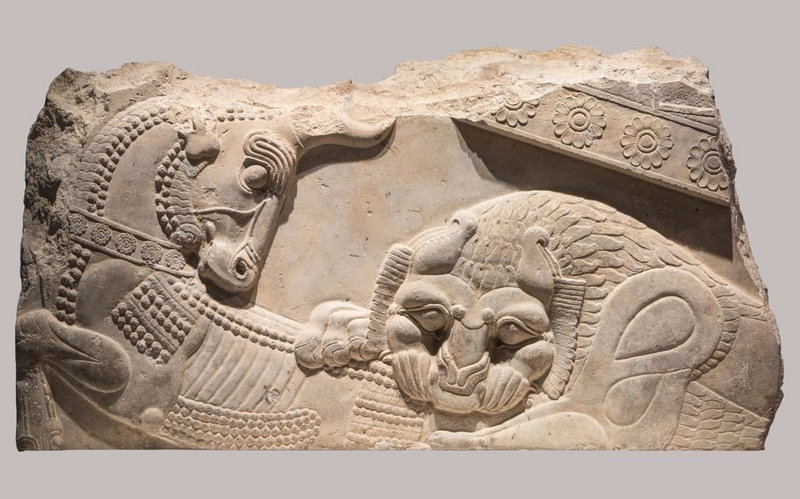

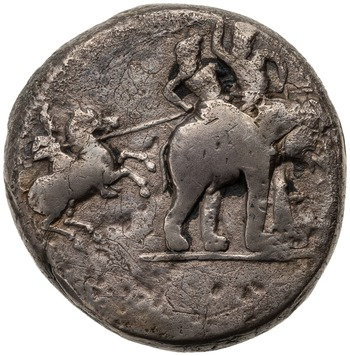


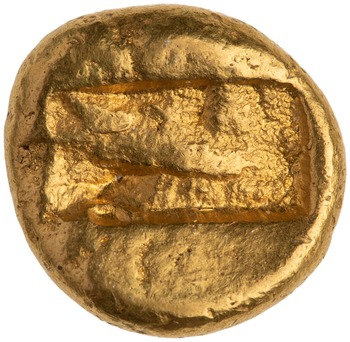
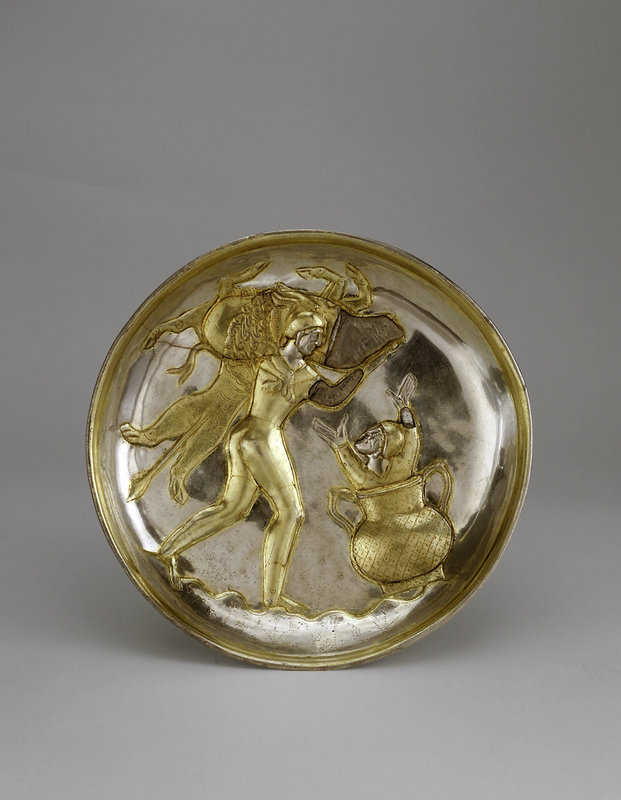








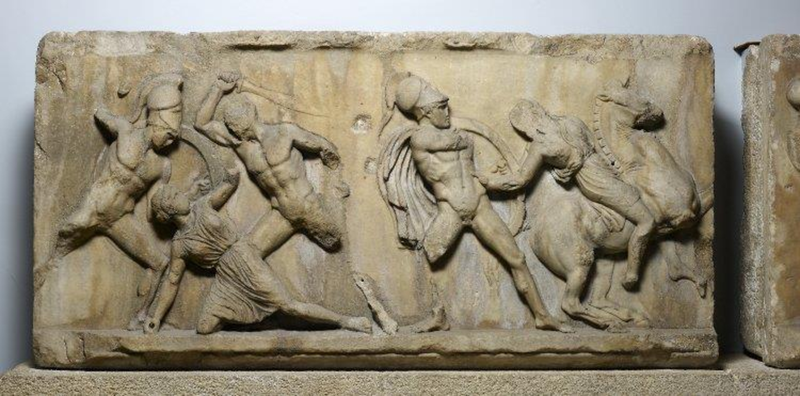




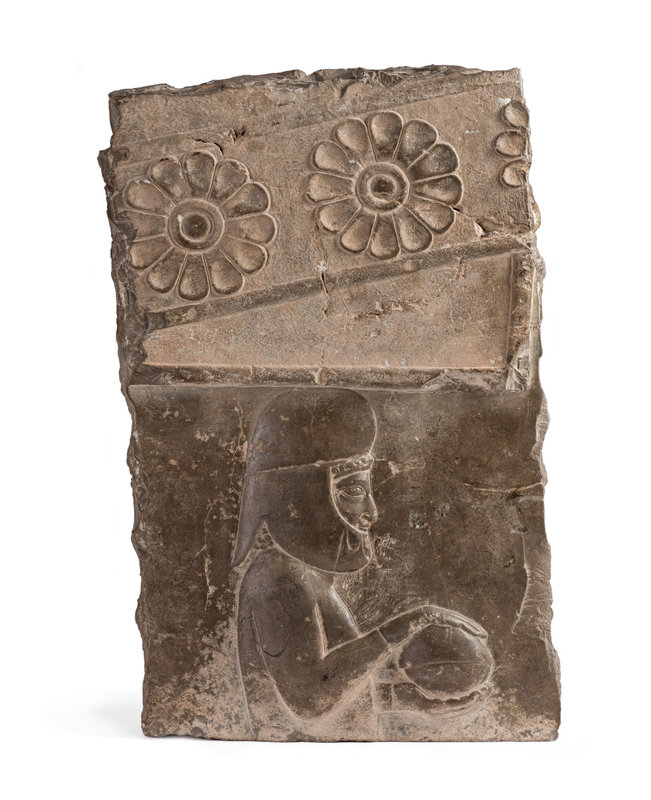




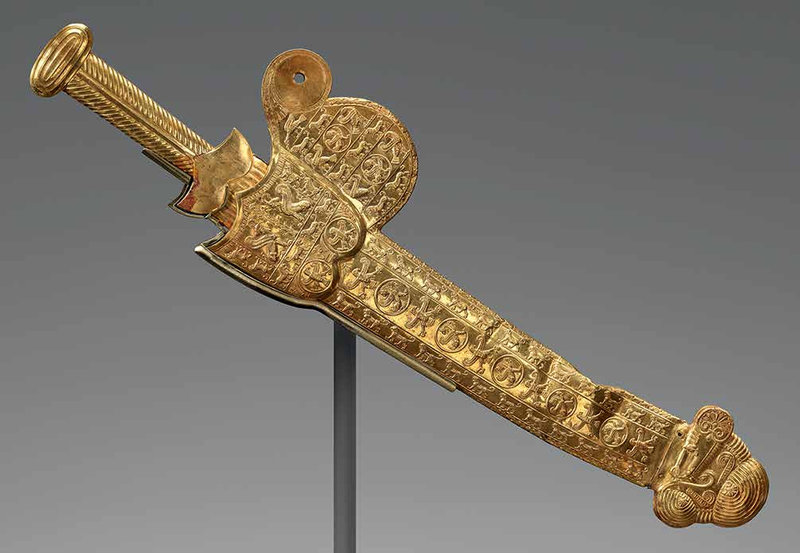






/image%2F1371349%2F20240425%2Fob_c453b7_439605604-1657274835042529-47869416345.jpg)
/image%2F1371349%2F20240425%2Fob_59c6f0_440358655-1657722021664477-71089985267.jpg)
/image%2F1371349%2F20240425%2Fob_07a28e_440353390-1657720444997968-29046181244.jpg)
/image%2F1371349%2F20240425%2Fob_0b83fb_440387817-1657715464998466-20094023921.jpg)